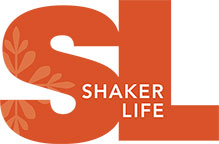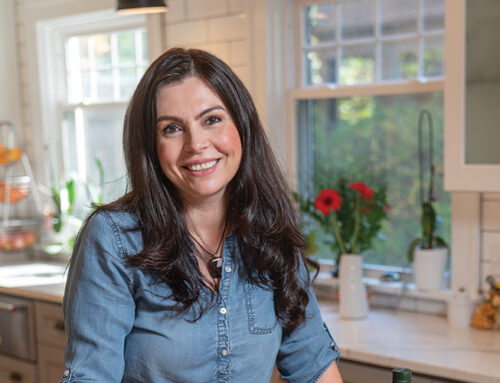The Cleveland Institute of Art, just a short drive down the hill in University Circle, ranks among the nation’s premier art schools. Over the years many of its faculty have made their homes in Shaker. We talk with three of them.
By Diana Simeon
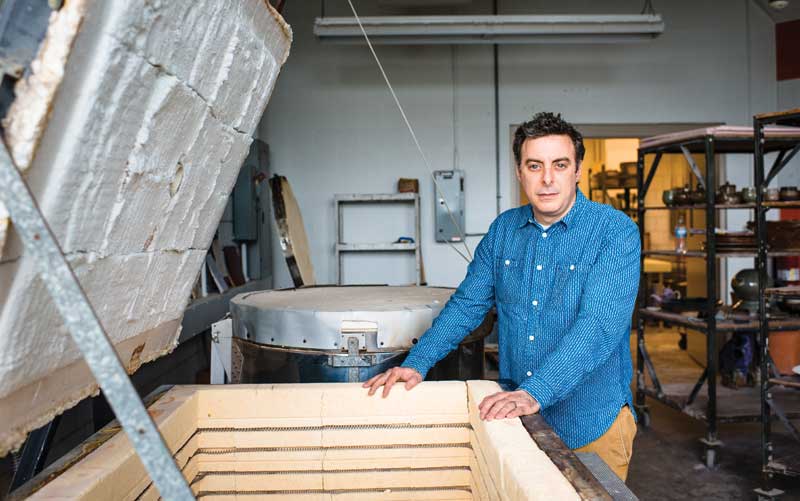
Seth Nagelberg | CERAMICS
Seth Nagelberg makes art that you can use each and every day, like his popular “SymShake” salt-and-pepper shakers or playful “Spin Vase.” He’s also got a series of porcelain tile, some dinnerware inspired by Styrofoam packaging, and even bowls made from kiln-fired up-cycled beer and wine bottles.
But Nagelberg is not the kind of artist who makes the one-of-a-kind ceramics you’d find in a gallery. Rather, he’s among a generation of artists who are melding craft, design, and manufacturing techniques to create ceramic artworks that can be enjoyed by a wider audience.
There was a time when Nagelberg wanted to be a more traditional ceramics artist. But after earning a B.F.A at the Hartford Art School at the University of Hartford, Nagelberg – who in 2015 was appointed chair of ceramics at CIA – felt burned out. So he spent time waiting tables and traveling, then turned to sculpture, eventually earning an M.F.A. at the prestigious Cranbrook Academy of Art in Bloomfield Hills, Michigan.
It wasn’t until after graduating from Cranbook that Nagelberg found himself again working in ceramics, this time as a shop technician at Parsons The New School for Design in New York City.
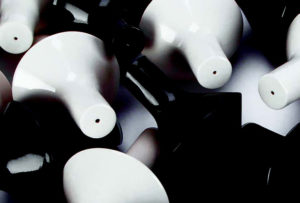
Seth Nagelberg’s SymShake salt and pepper shakers
But there was a twist. “I was working in a ceramics studio, but it was in the product design department at Parsons,” explains the artist, sitting in the light-filled ceramics studio at CIA. “This is something I had never expected.”
At Parsons, where in 2007 he was appointed assistant professor of product design, Nagelberg explored how he could use the industrial design process to make ceramic artworks – often functional – that could be reproduced using what’s called small-batch manufacturing.
It’s an approach to ceramics he’d like to make more popular at CIA. “I am very interested in small scale manufacturing. I’m hoping a portion of my students go into that and the others will continue to do conceptual work.” In 2015, he published his first book, Small Batch Manufacturing for Ceramics. Nagelberg had been exploring opportunities to move on from Parsons when the position at CIA was announced. “I had been looking for some time, but Cleveland was not on my radar,” he says.
And neither was Shaker Heights, but after Nagelberg was offered the job, it didn’t take long for him and wife Jennifer Adams to figure out the community was the place for their family, which includes two daughters.
“We were amazed when we saw Shaker,” says Nagelberg, who now lives in the Lomond neighborhood. “We zeroed in on it for the schools, but we were absolutely amazed by the houses. We loved how green everything was. And like a lot of people, we really liked the diversity.”
A bonus: no more long commute. “My girls used to be in their pajamas and ready for bed by the time I got home, but now I can be home for dinner.”
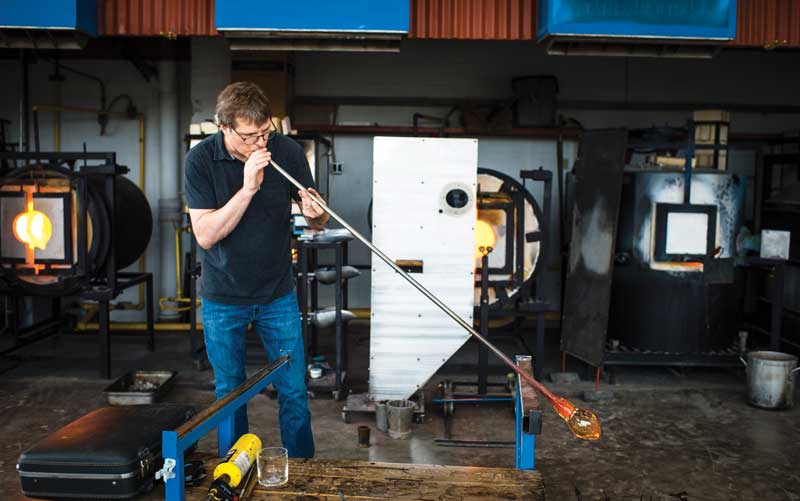
Marc Petrovic | GLASS
There’s really just one way to describe watching the glass artist Marc Petrovic at work: mesmerizing.
Standing in CIA’s “hot shop” – a studio containing furnaces and other equipment that allow artists to work with molten glass – last spring, Petrovic took a few minutes to demonstrate his craft for Shaker Life. He makes glass sculpting look almost effortless, no surprise given his more than two decades as a working studio artist.
In 2014, Petrovic was appointed chair of glass at CIA, assuming the position his former advisor, the prominent glass artist Brent Kee Young, had held for more than 40 years. Petrovic and his wife, Kari Russell-Pool, also a glass artist, are graduates of CIA.
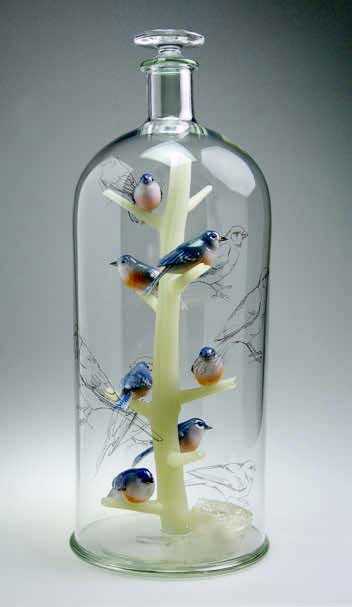
A work from Marc Petrovic’s Distilled Life series.
In fact, it was an encounter with Kee Young’s work that inspired Petrovic to major in glass. “I had come to CIA wanting to be either an industrial or graphic designer,” recalls Petrovic. “But seeing Brent’s piece in the faculty show – it was part of his fossil series – it just drew me in. I was amazed by how well-crafted it was.”
After graduation, Petrovic and Russell-Pool moved to North Carolina, just outside of Asheville, where Petrovic had landed work at the esteemed Penland School of Crafts. The couple had a studio in their backyard and, slowly, built up their reputations.
“We took slides of our work and sent them out to the top ten galleries. This was pre-Internet,” explains Petrovic. Several years later, they moved to Essex, Connecticut, which was where Russell-Pool had grown up, and set up a studio there. While Petrovic works in what’s termed free-hand hot glass sculpting, Russell-Pool is what is called a flamethrower, using torches and other tools to craft rods of glass into art.
Over his 20-plus year career, Petrovic has grown to have an international reputation. His work is sought after for both private and public collections, including in the Museum of Arts and Design in New York City and the Niijima Museum of Glass in Tokyo, among many others. He describes his work as concept-driven and personal. “The challenge for me is to take something inherently beautiful and manipulate it in a way to generate more meaning. I do a lot of pieces that have to do with geography and sense of place and where we’re from having an impact on who we are and who we become.”
Take, for example, his Distilled Life series, in which he creates glass vessels that are filled with a variety of objects, in which he reflects on themes of home and relationships.
“In the beginning, my work was about me and the influences on my life. At first, that was my wife and where we could afford to live,” he says. “But then we had children and priorities change. Responsibilities change.”
As a working studio artist, Petrovic had taught workshops, but he’d eschewed pursuing a full-time academic position. In fact, Petrovic had long felt that CIA was the only school at which he’d really want to do that, so when the opportunity arose to return to Cleveland, he and Russell-Pool decided they could not pass it up. Moving to Shaker was also an easy choice, thanks in part to the Shaker Schools – the couple has a sophomore at Shaker High and another daughter in college – but also because of the community itself.
“We just really liked the area,” says Petrovic, who now lives near Shaker Square. “We walk to Shaker Square. We can take the train downtown. It’s idyllic in a way.”
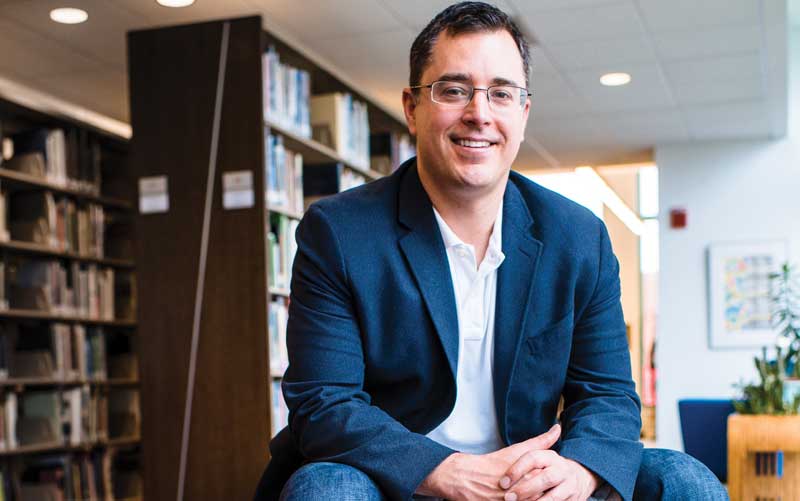
Christian Moody | CREATIVE WRITING
When you think of a school of visual arts, you may not picture a whole lot of writing going on. To the contrary, says Christian Moody, a widely published short-story writer who joined the faculty of CIA in 2015.
“That’s what is so interesting about working at CIA,” he explains. “If you design a video game, you have characters, you have a world, you have a story, so there is a lot of writing. Students doing film are working from scripts. Illustrators, whether it’s graphic narrative like a comic book or graphic novel, or editorial illustration, also work with text, so there is a lot of writing happening here.”
Moody earned his M.F.A. from Syracuse University and Ph.D. from the University of Cincinnati. His work has been published in Esquire, The Cincinnati Review, and Faultline, among other journals, as well as anthologized in the collections Best New American Voices and Best American Fantasy.
And Moody plans for more writing to happen at CIA in the near future. Next year, the school will launch a national literary magazine, for example, and there’s now a writing club. Students can also do a concentration in creative writing at CIA (think of it like a minor).
Like many writers, Moody has been working with words for much of his life. Growing up in Indiana, he was editor of the student newspaper at his high school, where he also founded a creative writing club. As an undergraduate at Indiana University, he intended to major in journalism, then fell in love with poetry. “I worked in poetry for a long time and even started my M.F.A. as a poet,” explains Moody.
But early in his time at Syracuse, he heard the writer George Saunders, who is on the faculty at the school, speak. “He writes fiction in which he blends these other-worldly qualities,” says Moody. “And I thought, ‘Oh, you can do that?’”
While a student at Syracuse, Moody heard the writer George Saunders speak: “He writes fiction in which he blends these other-worldly qualities,” says Moody. “And I thought, ‘Oh, you can do that?’”
Moody began writing his own short stories, quickly finding success with his work, which he describes as melding themes like family, love, and community with “something quirky,” like a science fiction or magical element.
As Moody was wrapping up his doctorate, the position at CIA caught his eye. “It really stood out because of the array of writing they were interested in. It was also a less traditional, more forward looking place,” he recalls. So he applied and, last July, was appointed assistant professor in the CIA’s Department of Liberal Arts.
Moody, his partner – the illustrator Margaret Kimball – and their daughter moved into Shaker’s historic South Shaker Building on Van Aken Boulevard last summer. “It was so charming and Hogwarts like, so we decided to live there until we figured out where we wanted to buy a house,” Moody says.
Kimball works as a professional illustrator and recently published the adult coloring book Birds & Botanicals. She is also among the artists selected by Cleveland’s LAND Studio to create a mural along the Red Line in advance of this summer’s Republican National Convention.
“We’ve been taking a lot of walks,” says Moody. “We love the walkable streets. We walk to the farmer’s market at Shaker Square. The playground. The library. We really love the Shaker Library.”
